Having grown up being known as Maddy I have always felt a kinship with madder. But madder reds have always been somewhat of a mystery. When I planted up my dye garden in my allotment I did of course include madder, along with blue-making woad and some other dye favourites of mine – mostly yellow producing dyes.
The chemistry of madder is just as complicated as the chemistry of indigo producing plants (of which there will be more another time).Just about anything can affect the final result – soil type, part of root, age of plant, PH and mineral content of water in dye bath, temperature, length of time in pot, and so on and on. Therefore it is not the easiest of dye plants to control at the small level.
However, during the summer I did a couple of experiments in my greenhouse using some more of my mini-skeins on Bluefaced Leicester yarn that I had spun the previous year.
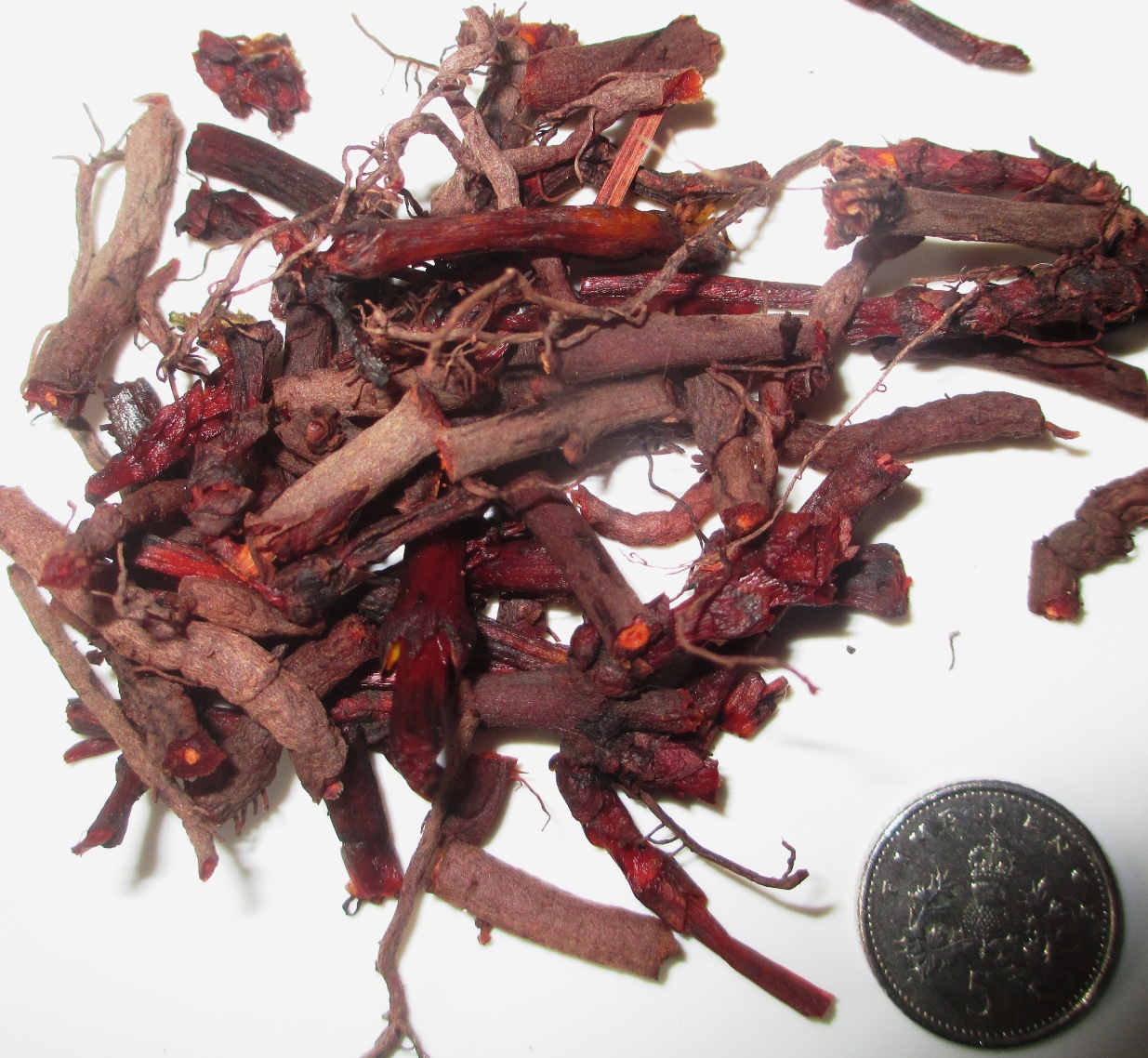
I dug up some of my madder plants which were now 3 years old – the minimum age you want the plants to be – carefully washed them and placed some in the first jar. You can see the red colour in the photograph above, bleeding from the broken stems.
For these experiments I used the solar dye method which means putting dye stuff and yarn or fibre into a pot with water and placing it in a place where the sun can provide the heat necessary to extract the dye. I used a shelf in my greenhouse.
I ground the roots fairly coarsely in my old coffee grinder and put them in a Kilner jar with some skeins of handspun Bluefaced Leicester in white, oatmeal and light brown, previously mordanted with Alum. Very simple! The downside of putting ground roots and yarn in the pot together, however, was that the bits of madder root attached themselves very securely to the yarn and I spent a long time picking out bits.
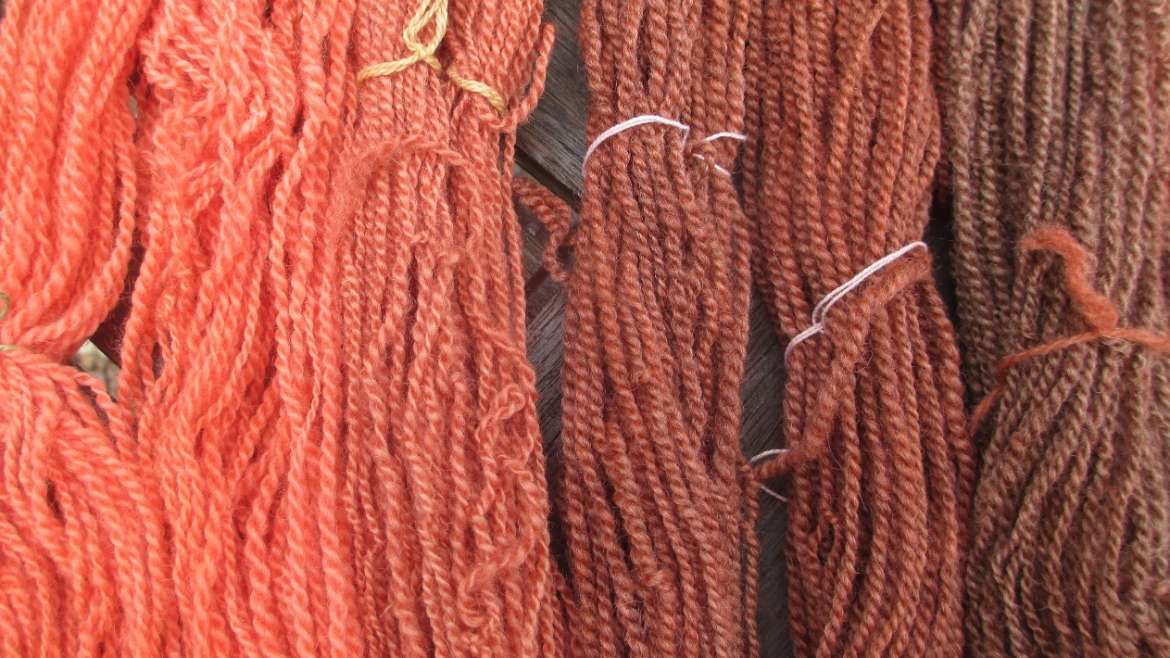
But the colours it produced were beautifully warm hues in reds and reddish browns.
So I moved on to solar dye pot 2.
This time I placed the madder roots in a small drawstring mulled wine spice bag and then immersed this and the yarns in water, in my rather lovely glass jar which I usually use for making Brandy Cherries – a very alcoholic but delicious treat in the dead of winter.
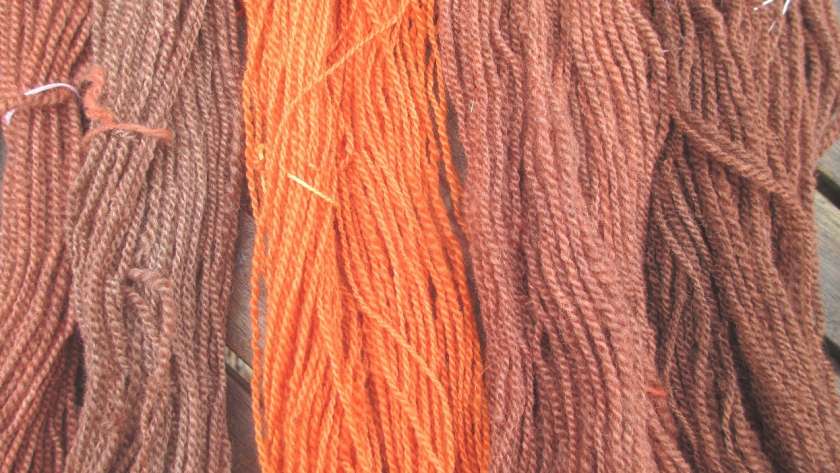
Interestingly, the colours of the yarns dyed in this second pot were noticeably more orange in tone. Everything else had been the same except for my putting the roots into a bag. Just goes to show how tricksy this dye can be at this level.
I am now waiting for my madder to reach four years old before I try again and see how close to red I can get my colours. Also next time, I shall soak and rinse my roots before using them as the orange tones of this dye are said to be the first to come out of the roots and this way you can loose some of that strong orange colour in the dyed yarn.
Want to learn more. Here are some more in depth articles, recipes and online stores where you can buy roots and seeds:
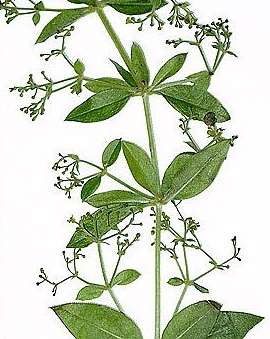

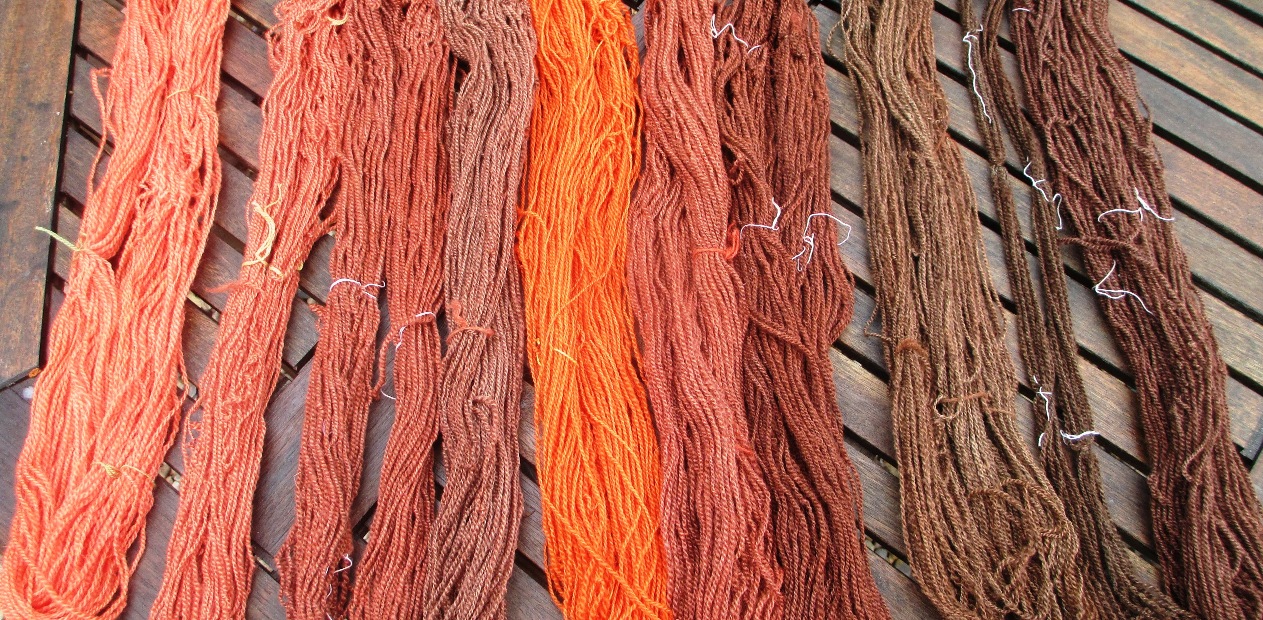
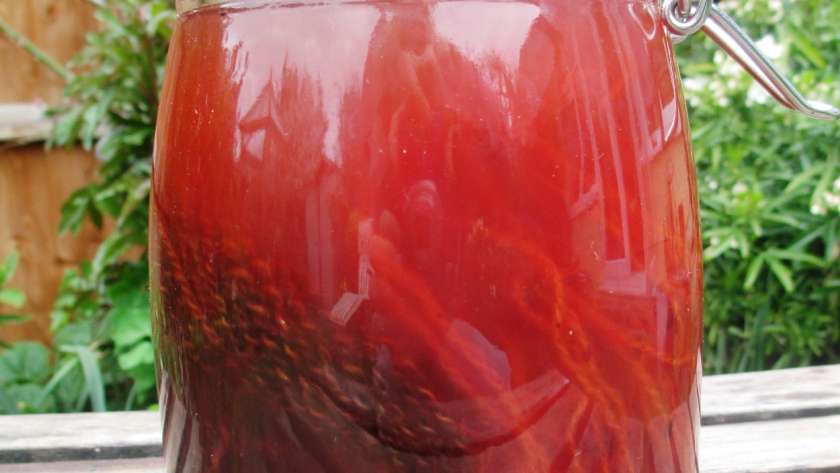
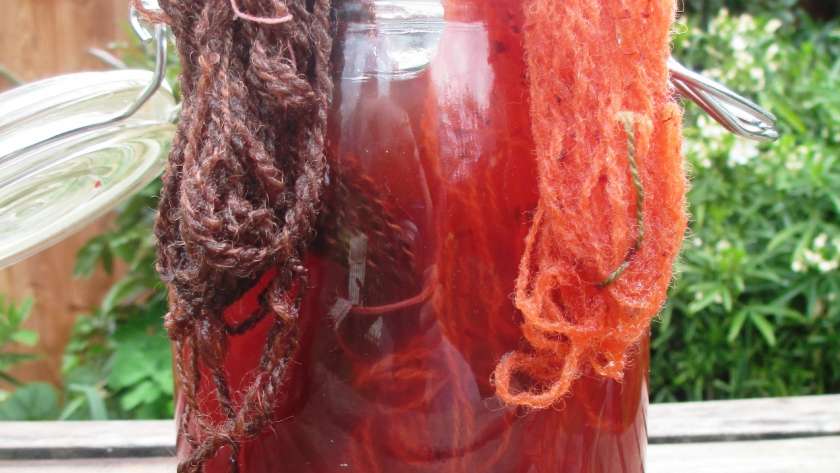
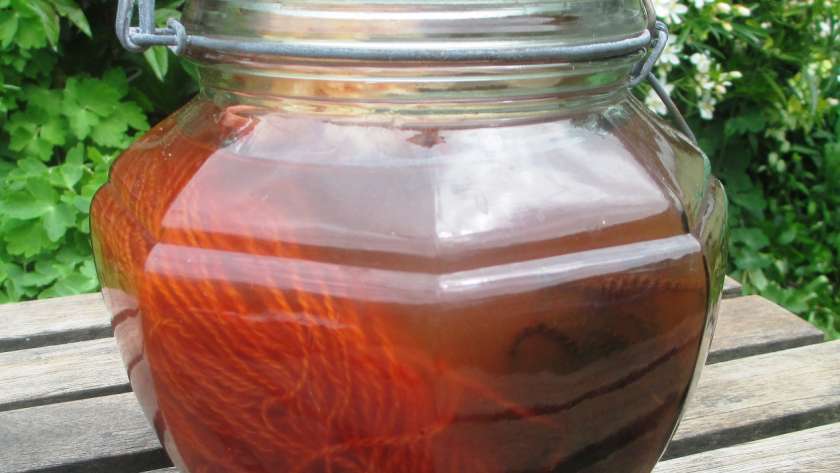
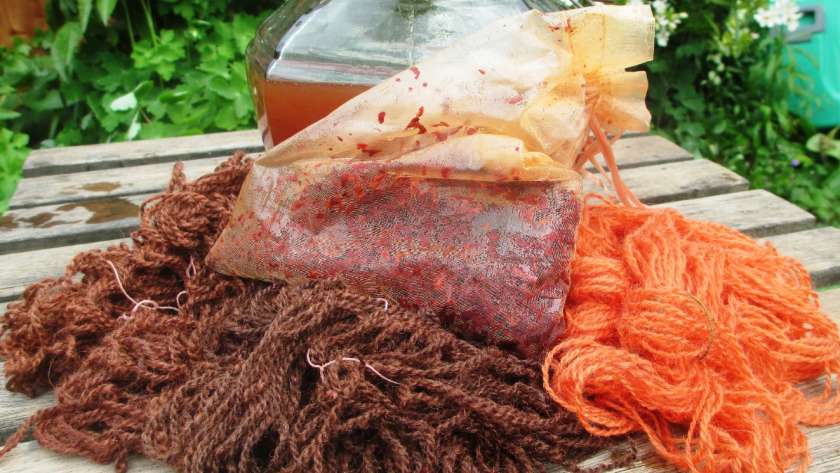


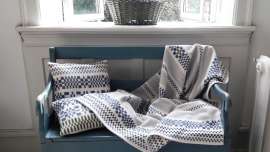
Leave a Reply